- How to Propagate Monstera Guide: The Three Ways to Succeed - September 17, 2021
- Escargot Begonia: Why Is The Rex Begonia So Rare? - August 31, 2021
- Rieger Begonia: When You Can Expect The Hiemalis Begonia To Flourish - August 31, 2021
Painted Leaf Begonia is a tropical perennial that is native to India. The beauty and compact size of this plant make it an easy fit for a window sill garden. If you are looking for a new plant that will bring wonderful colors and textures without any strange or fussy care requirements, you will love having a Rex Begonia as one of your houseplants.
How to Identify Rex Begonia
It is the beauty of this plant’s leaves that most gardeners admire. When you first look upon a Rex Begonia, you will be stunned by its lovely features. These features include:
- Leaves that are heart-shaped
- Leaves that are multi-colored in purple, pink, silver, red, and dark green
How To Grow Rex Begonia From Seed
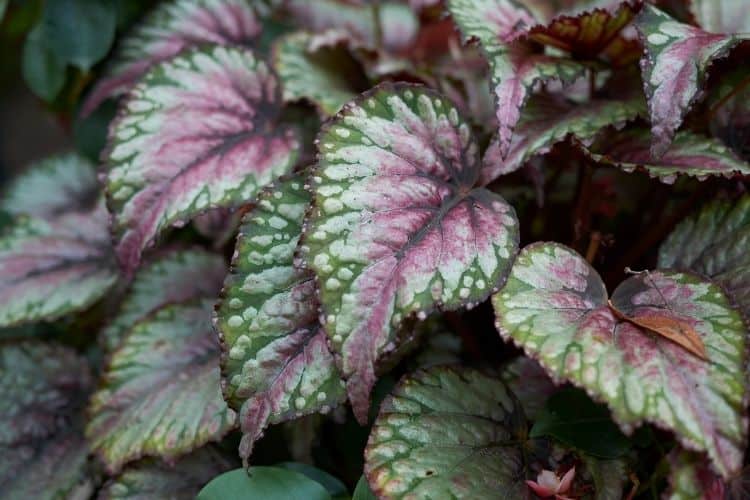
Growing a plant from seed can take a long time so be prepared to wait for many weeks or even a few months to see any sign of growth. If you decide to grow any variety of Begonia from seed, be aware that there are some special care requirements for this plant. These include:
- Do not touch the seeds with your hands (this could damage them)
- Do not cover the seeds with soil (this could suffocate them)
- Do not allow the seeds to become overly saturated with water (this could spoil them)
- Do not set the seeds in direct sunlight (this could burn them)
The steps for growing a Begonia plant from seed are simple and straightforward. They are:
- Purchase seeds from a reputable seed supplier.
- Fill a seed starter tray with seed starting mix.
- Tap the seeds out of their package and onto the starter mix (do not cover them with soil).
- Lightly moisten the soil with a spray bottle.
- Set the seed tray in a warm room without much sunlight.
- Cover the seed tray with its lid or with plastic wrap to hold in moisture.
- Moisten the soil as needed.
- Once sprouts appear, move the seed tray to a place with bright but indirect sunlight.
- When the plants are strong, they can be transferred to permanent plant containers.
Note: Begonia seeds do not always produce begonia plants that look like their parent plant. If you want to guarantee that the begonia plant you are growing will have certain features, it is best to grow a new plant from cuttings instead of seeds.
How to Propagate Rex Begonia
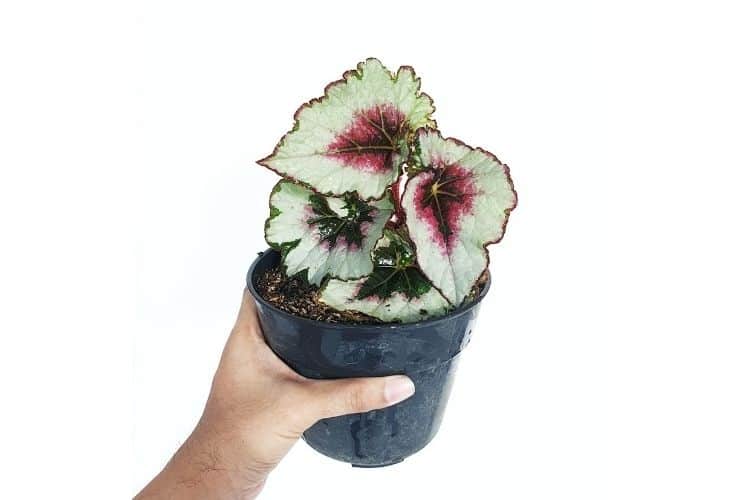
Besides using seeds, there are three other ways to propagate a new Rex Begonia. All three methods are simple and should not take a lot of time or effort.
One very important factor to keep in mind is that plant propagation should only be done on warm days in early spring. This allows the plants plenty of time to settle into their new homes and recover from the stress of propagation. With this in mind, let’s talk about the methods now.
The Stem Cutting Method
Cut off a 3 to 4-inch long stem that has at least one node and a leaf with a sterile cutting utensil.
The Leaf Cutting Method
Cut off a healthy leaf with a sterile cutting utensil.
Plant Division Method
Remove the plant from its container and cut the plant’s rhizome with a sterile cutting utensil.
No matter which method you have chosen, you will need to follow these steps to complete the plant propagation process.
- Fill a plant container with soil consisting of half perlite and half peat moss.
- Set the part of the plant that you cut off into the soil.
- Lightly moisten the soil.
- Cover the container with plastic that has ventilation holes cut in it.
- Set the plant in a warm room with bright but indirect sunlight.
- Once the plant has grown its own root system, it can be transferred to a permanent plant container and treated as a mature plant.
Rex Begonia Growing Conditions
This tropical plant prefers growing conditions that are similar to its native environment. To recreate this environment in your home, plan to provide it with extra heat and humidity. This can be done through modern technologies, such as a Plant Heat Mat for extra heat and either a Pebble tray or a Plant Humidifier for extra humidity.
How to Plant Rex Begonia
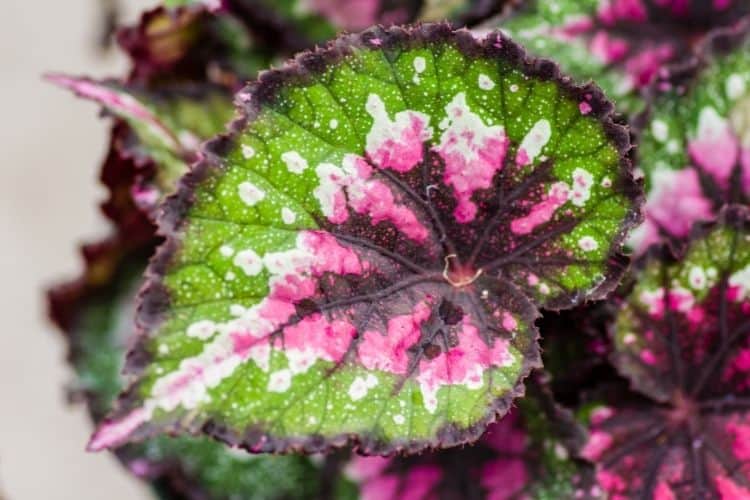
It is unlikely that you will need to replant a Rex Begonia very often; in fact, it is recommended that you don’t remove this type of plant from its container regularly since this can cause stress and damage. If you sense that your Rex Begonia needs more soil or new soil before it is really ready to be moved, then top off the plant’s soil with fresh, clean soil.
The following signs are proof that your Rex Begonia should be replanted:
- Compacted Soil
- Roots that are crowded and growing into a ball formation
- A plant that looks too big for its current container
If you notice these signs in your plant, prepare to replant it on the next warm spring day that you have available. The steps for doing this are:
- Select a new plant container that is two inches larger in diameter
- Fill the new plant container with potting soil
- Gently remove the plant from its current container and lightly dust off its roots
- Prune any rotten roots and leaves
- Create a hole in the soil of the new plant container
- Set the plant in the hole
- Secure the plant in its new home by spreading the soil around its base
- Lightly water the plant
- Set the plant container in a warm place that receives plenty of bright but indirect sunlight
Rex Begonia Potting & Soil
This type of plant should be given soil that is both well-aerated and well-draining. An African Violet potting soil such as this one produced by rePotme.com is an excellent choice.
Don’t forget that the plant container is just as important as the soil. Choose a container that is shallow, wide, and has drainage holes. This terracotta planter by EPFamily is a great option for growing begonias. This plant can also be grown in a hanging planter, so don’t limit yourself to one type of plant container while shopping.
Rex Begonia Water Requirements
This type of plant should never have dry soil; its soil should be kept moist but not soggy at all times. When watering it, avoid getting water on its leaves since this can cause them to rot.
If possible, use the soak and dry method for watering it. This is a simple method that will guarantee to keep your plants from getting overwatered or getting their delicate leaves wet. Here are the steps for the soak and dry method:
- Test the plant’s soil with your finger (only water the plant if the top half of its soil is dry)
- Fill a large container or a tub with water
- Set the plant container in the water (do not fill the container so deep that the water overflows the top of the plant container)
- Allow the plant to soak up water through its container’s drainage hole for 15 minutes
- Remove the plant from the water and allow it to drain off excess water through its container’s drainage hole
Note: A plant watering app is a great tool to use in the garden. These are easy to download and can save you a lot of headaches when it comes to remembering how and when to water each variety of plant in your garden.
Rex Begonia Light Requirements
This type of plant should be given plenty of bright but indirect sunlight. If it is set in direct sunlight, its delicate leaves are sure to burn. If you cannot provide this type of sunlight for your begonia, try setting up some grow lights in your home. They will grow just fine under these.
Note: Make sure your plants are getting the proper amount of sunlight by testing your indoor spaces with a light meter or a light meter app and checking these results against a guide for indoor plant lighting.
Best Rex Begonia Fertilizer
This type of plant should not be fed in the winter and when it is fed during spring and summer, it should be given diluted doses only once a month. Choose a balanced liquid fertilizer such as this option by Bonide.
Best Rex Begonia Companion Plantings
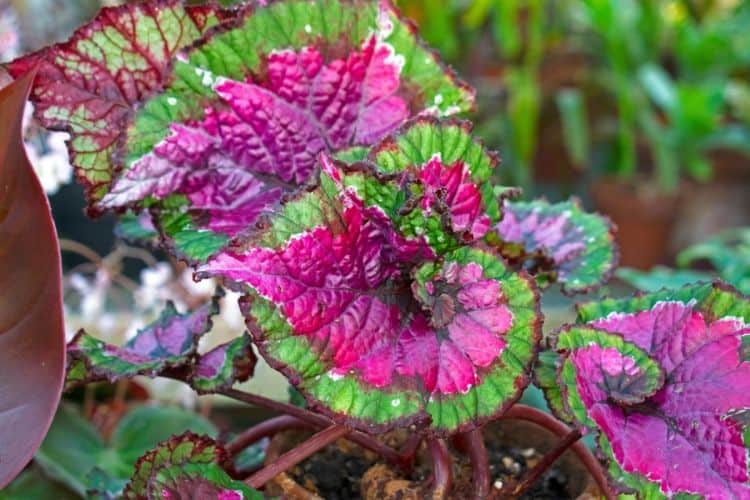
If you thought that only one Rex Begonia could not satisfy your love for plants, you’ll be happy to know that planting companions are an easy way to care for the needs of your plants.
Yes, hoarding plants is not a bad thing. Buying all the plants at the greenhouse is actually beneficial for those humidity-loving plants of yours. This is because tropical plants share extra humidity with each other when they are clustered together.
When you consider what types of plants to use as a companion planting for your Rex Begonia, keep the following requirements in mind:
- Find a plant that has similar care requirements, e.g., the same type of soil and watering method
- Find a plant that will look aesthetically appealing next to your other plant
- Find a plant that is easy to grow, propagate, and care for
A few examples of plants that will meet these plant companion requirements are:
Angel Wing Begonia
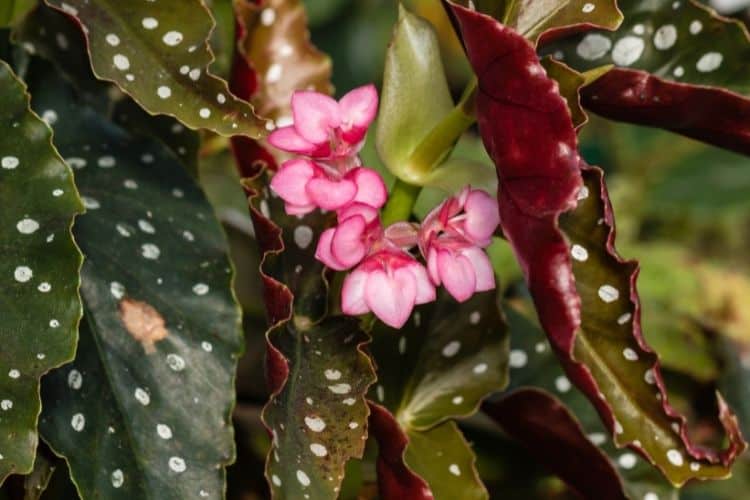
This Begonia variety comes from South America and features long, spotted, green leaves that resemble angel wings. Set alongside your Rex Begonia, you are going to create a beautiful tropical garden space.
Pros
- Angel Wing Begonia is easy to care for
- Angel Wing Begonia is deer resistant
- Angel Wing Begonia is easy to propagate
Cons
- Angel Wing Begonia is not cold hardy
Peperomia Ferreyrae
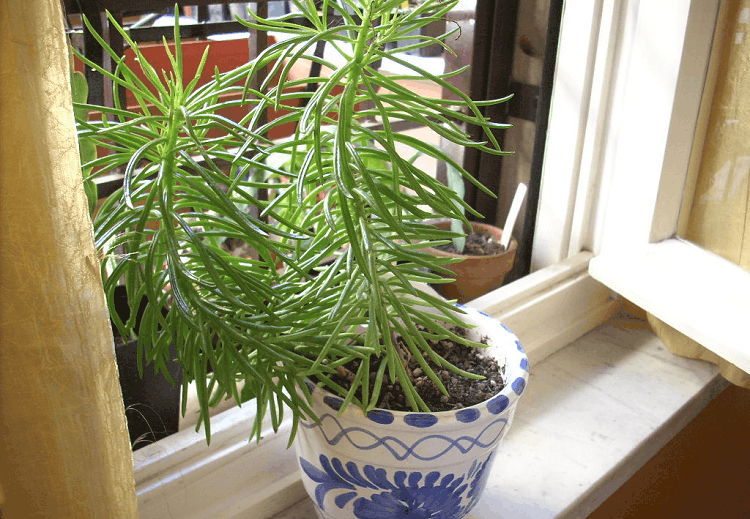
This plant that resembles long green beans is so unique looking but so easy to care for. You’ll thoroughly love the texture and design this plant will bring to your garden space.
Pros
- Peperomia Ferreyrae has light, water, and soil requirements that are similar to those of Rex Begonia
- Peperomia Ferreyrae is not toxic
Cons
- Peperomia Ferreyrae is susceptible to infestations of mealybugs and spider mites
Pothos Varieties
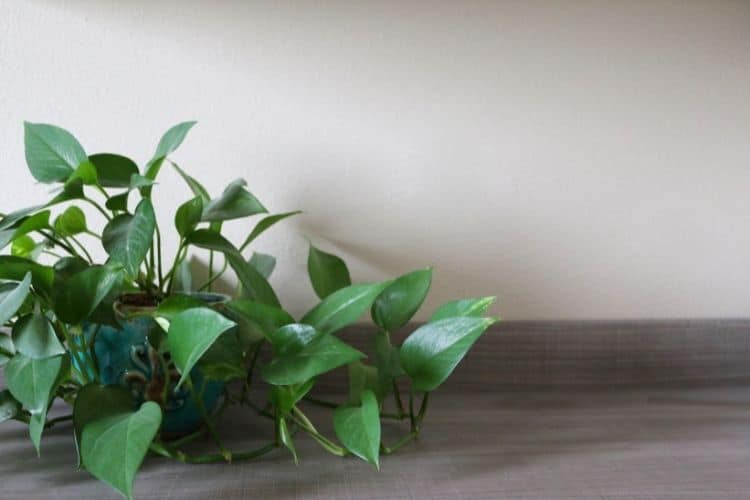
These easy-going plants bring beauty and cleaner air without stress. Just imagine several Pothos varieties trailing their lovely vines alongside your Rex Begonia. Pure paradise.
Pros
- Pothos all have the same care requirements
- Pothos plants are very unfussy
- Pothos will provide extra humidity
Cons
- Most Pothos varieties are toxic
Rex Begonia Philodendron Diseases and Common Problems
Here is a list of the most common issues faced by these plants. In this list is information on how to identify and treat each issue.
Gray Mold
A sign of this problem is brown or gray patches on the plant’s leaves. This is often caused by excess moisture on the plant’s leaves. Follow the following tips to treat this problem:
- Remove any affected leaves and stems
- Apply a fungicide to the plant
- Move the plant away from other plants to inhibit the spread of gray mold
- Avoid watering the plant’s leaves in the future
Mildew
A sign of this problem is white powder-like blotches on leaves and stems. This is caused by improper watering or by exposing the plant to too much heat. Follow the following tips to treat this problem:
- Remove any affected leaves and stems
- Apply a fungicide to the plant
- Move the plant to a spot that has less heat
- Tweak the plant’s water regimen
Root Rot
This is caused by overwatering a plant. If you learn how to properly water your plants, they should not get root rot. If, however, you are suspicious that your plant is suffering from this, look for these symptoms:
- Stems and leaves that are black
- Stems and leaves that are translucent
- Stems and leaves that are mushy
- Leaves that are dropping off regularly
Rex Begonia Treatments and Maintenance
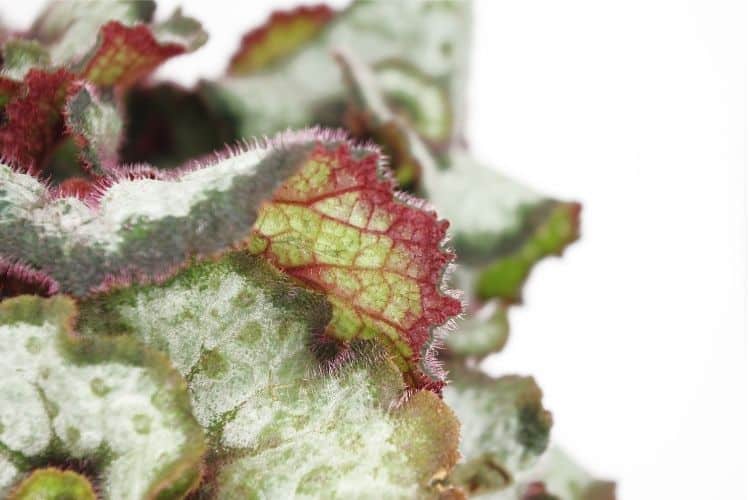
Since prevention is better than treatment, take some time to learn about what sort of diseases and pest infestations each of your plants experiences. Then, learn how you can best treat and prevent those. Here are few tips to help keep your plants healthy and disease-free:
- Schedule regular plant inspections and treat any infestations or diseases quickly.
- Regularly clean the plant’s leaves with neem oil.
- Learn how to properly water and feed your plant.
- Provide your plant with adequate amounts of sunlight, heat, and humidity.
- Mix diatomaceous earth into the soil of potted plants.
Where to Buy Rex Begonia Seeds Online
Etsy is a great place to shop for all varieties of begonia seeds.
Where to Buy Mature Rex Begonia Online
Etsy is also a great place to shop for mature begonias.
Research Citations
FAQs
Question: Is Rex Begonia Toxic?
Answer: While this plant is not considered toxic to humans, it is considered toxic to animals. It is best to keep begonias, especially their tubers, away from your beloved pets. If your pet has consumed any part of these plants, contact a medical professional or poison control.
• Animal Poison Control
• Ask a Poison Control Vet
Question: Which USDA Hardiness Zone Can Rex Begonia be Planted In?
Answer: Since this plant is not cold-hardy, it is important to keep it indoors during winter if you do not live in zones 10 and 11.
Question: How Large Will My Rex Begonia Grow?
Answer: This plant will grow leaves that are up to 12 inches in width and its stems will grow between 10 and 26 inches long.
Painted Leaf Begonia: Conclusion
Rex Begonia is certainly worthy of its more common names of Painted Leaf Begonia or Fancy Leaf Begonia. This plant is colorful, stunningly beautiful, sophisticated, and surprisingly easygoing. You are going to love keeping one of these plants in your home or garden space.

